This article was co-authored by Francisco Gomez. Francisco Gomez is the Head Coach at the FIT Potato Gym, a training gym established in 2001 in the San Francisco Bay Area. Francisco is a former competitive runner who helps endurance athletes train for major marathons like the Boston Marathon. Francisco specializes in Injury Rehab, Flexibility, Marathon Training, and Senior Fitness. He has a B.S. in Nutrition and Exercise Physiology & Running.
There are 18 references cited in this article, which can be found at the bottom of the page.
wikiHow marks an article as reader-approved once it receives enough positive feedback. In this case, several readers have written to tell us that this article was helpful to them, earning it our reader-approved status.
This article has been viewed 1,313,627 times.
Foot cramps usually develop suddenly and cause a sharp and intense pain that lasts for about three minutes. Your feet and toes are a common place for cramps and spasms to happen. Your feet carry around your body weight all day long, sometimes walking, standing, or moving more quickly, and often in shoes that do not fit properly. Quickly treating the cramp helps to stop the immediate pain, but if you have frequent problems with foot cramps you may need to take additional steps.
Steps
Getting Immediate Relief
-
1Stop your activity. If you are exercising or performing some activity that causes the spasm or cramp to start, then stop doing whatever you were doing that triggered the cramp.[1]
- Avoid continuing activities that you recognize as causing added strain on your feet that leads to the pain and cramping.[2]
-
2Stretch the cramped muscle. Muscle cramps are sudden, unexpected, and repeated contractions causing spasms of a muscle. To stop the foot or toe cramp quickly, the cramped muscle needs to be stretched.[3]
- By stretching the muscle, you are preventing it from remaining in the contracted or cramped position.[4]
- Stretching a cramped muscle works best if you can hold the stretched position for about a minute or longer, and until the cramp begins to release or until the repeated contractions begin to slow/stop. You may need to repeat the stretched position if you feel the cramp returning.[5]
- The arch of the foot and the toes are the most common areas of the foot where cramping occurs.[6]
- Stretch your arches by grabbing your toes with your hand while seated, and pull them upward until you feel a stretch in your arch. Hold this position for 30 seconds, and release. If you feel the cramp returning then repeat the stretch.[7]
- You can also try rolling a tennis ball under your foot. While seated or standing, you can use this tool under the pad of the toes, the arch, and the heel.
Advertisement -
3Put weight on the cramping foot. This is a good way to stretch muscles, tendons, and ligaments that are causing the cramping in either your arch or your toe area.[8]
- As quickly as possible when you become aware that your foot or toe area is starting to cramp, change positions so that your body weight is on the painful foot.[9]
-
4Walk around. As the pain starts to subside, walk around.[10]
- Continue to walk around to prevent the area from cramping again. Once a cramp or spasm occurs, the muscles in the area may continue to cramp or spasm until it is completely relaxed.
- This means that you may need to remain standing and/or walking around for at least three minutes, or even longer, until you feel the area is relaxed and there is no further pain.[11]
- Be prepared to continue walking if the pain comes back when you remove the added pressure provided by your body weight.[12]
- Once the pain is better, continue to stretch until you feel the muscles are relaxed. Stretch your arch and your toes by placing a towel on the ground and picking it up by scrunching your toes together.[13]
- Add a stretch for your calf muscles to provide additional relief if needed to stretch the muscles, tendons, and ligaments that attach to your heel area. Even if your calf muscle is not cramping, it may prove helpful to stretch your calf muscles once the initial pain is managed.[14]
- Place one foot flat on the floor about four to five foot-lengths away from a wall. Lean into the wall with your hands until you feel a stretch in your calf muscles while keeping your foot flat on the floor. Hold for 30 seconds then repeat if you feel the foot or toe cramp returning.[15] It is beneficial to do this stretch with the knee straight and also with the knee bent. This will stretch both components of the calf muscle.
-
5Massage your foot. In addition to stretching your foot or toes that are cramping, remove your shoes and socks and gently massage the area.[16]
- Keep your foot and toes in the stretched position as you massage the area.[17]
- Massage your foot and locate the hardened muscle that is cramping. Using your thumbs, massage the hardened area of the cramp. You may need to be fairly firm and aggressive over the hardened muscle to create relief. Continue to massage the area until the muscle begins to relax.[18]
- Begin to massage the surrounding area, returning to the primary trigger point as you massage. Work in either circular or stretching motions with your hands as your massage the areas.[19]
- Pull your toes upward as you massage if they are being drawn down or if your arch is cramping.[20]
- Use a downward pull to stretch your toes if they are cramped in a position that is pulling them upward. Continue your massage for two to three minutes, or until you feel the cramped muscle has relaxed and is no longer painful.[21]
-
6Apply heat. If the muscle is currently cramping, heat helps when applied to tightened muscles.[22]
- Use a heating pad or crushable hot pack as a heat source to relieve the tension in the muscle.
- After the cramp subsides, if you have any residual pain from the event, ice applications can help to relieve sore and tender muscles.[23]
-
7Apply ice. Ice your foot regularly for several days to help the area to recover from overuse, an injury, or improper-fitting footwear.[24]
- Avoid applying ice directly to the skin. Use a thin towel between your skin and the cold pack or ice source to avoid damaging the skin.[25]
- Apply the ice for 15 to 20 minutes several times each day for two to five days, or until the soreness and tenderness subsides.[26]
- Apply ice to the bottom of your foot and heel area while standing by gently rolling a frozen 12 to 16 ounce water bottle along the bottom of your foot. Be sure you have support so you do not fall.[27]
-
8Rest your foot. Foot pain and cramping can be caused by several variables including either an injury or overuse.[28]
- Your foot is made of a complex arrangement of bones, ligaments, tendons, and muscles. Any of these can be overworked or injured which leads to foot pain, spasms, and cramping.[29]
- Foot pain and cramps caused by both injuries and overuse usually respond to rest.[30]
- There is no clear time frame recommended for staying off your foot if the cramping caused by overuse other than watching your pain level and following any instructions provided by your doctor. Take opportunities to rest your feet as often as possible.[31]
- This may include a few days away from constant standing or walking, wearing work shoes or boots that may be triggering the cramps, or other activities that keep you on your feet for the majority of the day.[32]
- If you have suffered a specific injury, stay off your feet for the amount of time directed by your doctor.[33]
Preventing Future Cramps
-
1Exercise regularly. Routine exercise keeps your muscles in good condition.[34]
- Gradually increase your intensity of aerobic exercises to help condition the muscles, tendons, and ligaments in your feet and to reduce your experience with cramps. Swimming is a great aerobic exercise to treat problems with foot pain and cramps without bearing weight through the feet and unloading the joints.[35]
- Work towards improving your level of fitness. Include stretching and flexibility exercises both before and after you exercise.[36]
- If you already exercise regularly, evaluate your workout routines to determine if any existing exercises are contributing to your cramps.
-
2Wear shoes that are supportive. Select shoes that fit well all around, have shanks and solid heel counters built in, and provide good support.
- A shank is a supportive strip that runs along the bottom of the shoe. It is not visible, so it is difficult to tell if the shoe manufacturer included a shank in the design. If the shoe is flimsy, and easy to bend in the middle, then it probably does not have a shank.[37]
- The heel counter is also not visible, but the presence of a solid heel counter can be determined by pressing inward on the middle, upper area of the back part of the shoe. If it easily collapses to the inside, then the heel counter is not very strong. The more rigid and supportive the heel counter is, the more difficult it will be to push the upper back part of the shoe toward the inside sole.[38]
- Many shoe stores have specialists who can evaluate your gait and fit you properly.
-
3Replace shoes with worn soles. Prevent heel pain and plantar fasciitis by discarding shoes with worn soles and heels.
- Worn soles and heels contribute to an uneven step with heel counters that have lost some of their support. Discard old shoes and replace with new ones that have the proper support.
- Be aware that wearing high-heeled shoes may be part of the cause of repeated foot and toe cramps.
-
4Keep your feet and toes flexible. Routinely performing flexibility exercises can work to prevent foot and toe cramps.[39]
- Improve the flexibility and strength in your toes by raising your foot into a stretched position as if you were standing on your tip toes. Hold for five seconds and repeat ten times. Switch to the other foot.[40]
- Try holding onto a wall or other support and raising yourself onto your toes, like a ballet dancer. Hold for five seconds and repeat ten times, then switch to the other foot.[41]
- From a seated position, lift your flat foot onto your toes, but this time curl your toes inward. Hold for five seconds, repeat ten times, then switch to the other foot.[42]
- Roll a golf ball along the bottom of your foot for two minutes, then switch to the other foot.[43]
- Place several marbles, as many as 20, on the floor then pick them up one by one with your toes and place them into a bowl or other container. Switch feet and repeat the exercise.[44]
-
5Walk barefoot in the sand. While some foot conditions recommend avoiding walking barefoot, foot and toe cramps benefit from the foot conditioning this provides.[45]
- Walking barefoot in the sand helps to strengthen your toes along with all the small intrinsic muscles of the foot and ankle and provides a gentle massage for your feet.[46]
-
6Stay hydrated. Dehydration is a common cause of foot and toe cramps.[47]
- Drink water before and after you exercise, and throughout the day to be sure you are getting enough fluids.[48]
- Try drinking an electrolyte-enhanced sports drink or water; very often it is an electrolyte imbalance causing cramps.
- You may also want to keep a glass of water at your bedside for cramps that may occur during the night.[49]
-
7
Seeking Medical Attention
-
1Seek immediate attention if necessary. If you develop severe pain or swelling, see a doctor promptly.[52]
- Also seek medical attention quickly if you are unable to walk or put weight on your foot.[53]
- If there are areas of broken skin that are oozing, or if you have any signs of infection, seek immediate medical attention.[54]
- Signs of infection include redness, warmth or tenderness to the touch, or a fever of 100 °F (37.7 °C) or higher.[55]
- Also seek immediate care if you have any persistent pain or cramping and you have diabetes.[56]
-
2Pay attention to any related symptoms. If you notice any changes in the immediate area, or if both feet become painful or are cramping, make an appointment to have your feet examined.[57]
-
3See your doctor with persistent cramps. Cramping and pain that continues for more than one week, with or without using rest and ice applications, warrants medical evaluation.[59]
- Persistent cramps in one or both feet may indicate an underlying condition with your feet or possibly even a medical cause for the problem.
-
4Consider an underlying medical condition. Work with your doctor to evaluate for possible medical causes of your foot cramps if they persist. Some medical conditions that may be causing your foot pain and cramps include the following:[60]
- Abnormal levels of electrolytes in the body.[61]
- Dehydration caused by a need to increase your intake of water and/or electrolytes.[62]
- Thyroid disorders.[63]
- Vitamin D deficiency.[64]
- Kidney disease including early stages as well as more severe forms of kidney disease that require dialysis.[65]
- Diabetes, both type 1 and type 2.[66]
- Peripheral arterial disease.[67]
- Arthritis, both rheumatoid and osteoarthritis.[68]
- Gout, which usually does not cause direct cramps but does cause severe and intense pain.[69]
- Cold stress or trench foot, which is caused by working in conditions where your feet stay either exposed to cold or exposed to warmer temperatures, as high as in the 60’s °F, but stay consistently wet.[70]
- Nerve damage to either a single nerve or to a bundle of nerve fibers.[71]
- Brain disorders such as Parkinson’s, multiple sclerosis, Huntington’s disease, and muscle dystonias.[72]
- Pregnancy, most often with foot cramping and pain in the third trimester, but can occur anytime during the pregnancy.[73]
-
5Follow any recommendations made by your doctor. Several of the medical conditions listed can be easily resolved.[74]
- For example, adjusting your fluid intake and/or the types of beverages you drink may be a simple step that resolves the problem. Use vitamin D supplements if instructed to do so by your doctor.[75]
- Follow the directions provided by your doctor to correct the problem. Those instructions may include a needed follow-up with additional recommended tests, adjustments to your medications, or a referral to a specialist.[76]
-
6Review your medications. Your doctor may be able to adjust some of your prescribed medications that may be contributing to your cramps.[77]
- Some examples of medications that may contribute to foot and toe cramps include furosemide, donepezil, neostigmine, raloxifene, tolcapone, albuterol, and lovastatin. This is only a list with examples. If you feel you are taking a different medication that is related to your cramps, discuss this with your doctor.[78]
- Never adjust your medications on your own. With the help of your doctor, doses can possibly be adjusted to correct the problem or a different medication can be prescribed to replace one that may be contributing to your cramps.[79]
References
- ↑ http://www.osteopathic.org/osteopathic-health/about-your-health/health-conditions-library/general-health/Pages/muscle-cramp.aspx
- ↑ http://www.mayoclinic.org/symptoms/foot-pain/basics/causes/sym-20050792
- ↑ http://www.mayoclinic.org/diseases-conditions/muscle-cramp/basics/definition/CON-20014594?p=1
- ↑ http://www.nlm.nih.gov/medlineplus/ency/article/003193.htm
- ↑ http://www.mayoclinic.org/diseases-conditions/muscle-cramp/basics/definition/CON-20014594?p=1
- ↑ http://www.mayoclinic.org/diseases-conditions/plantar-fasciitis/multimedia/foot-stretches-to-prevent-plantar-fasciitis/img-20008230
- ↑ http://www.mayoclinic.org/diseases-conditions/plantar-fasciitis/multimedia/foot-stretches-to-prevent-plantar-fasciitis/img-20008230
- ↑ http://www.mayoclinic.org/symptoms/night-leg-cramps/basics/definition/sym-20050813
- ↑ http://www.mayoclinic.org/symptoms/night-leg-cramps/basics/definition/sym-20050813
- ↑ http://www.mayoclinic.org/symptoms/night-leg-cramps/basics/definition/sym-20050813
- ↑ http://www.foot-pain-explored.com/foot-cramps.html
- ↑ http://www.foot-pain-explored.com/foot-cramps.html
- ↑ http://www.mayoclinic.org/diseases-conditions/plantar-fasciitis/multimedia/foot-stretches-to-prevent-plantar-fasciitis/img-20008230
- ↑ http://www.mayoclinic.org/diseases-conditions/plantar-fasciitis/multimedia/foot-stretches-to-prevent-plantar-fasciitis/img-20008230
- ↑ http://www.mayoclinic.org/diseases-conditions/plantar-fasciitis/multimedia/foot-stretches-to-prevent-plantar-fasciitis/img-20008230
- ↑ Francisco Gomez. Athletic Trainer. Expert Interview. 24 October 2019.
- ↑ http://www.osteopathic.org/osteopathic-health/about-your-health/health-conditions-library/general-health/Pages/muscle-cramp.aspx
- ↑ https://www.youtube.com/watch?v=MRvu3_8QPsM
- ↑ https://www.youtube.com/watch?v=MRvu3_8QPsM
- ↑ https://www.youtube.com/watch?v=MRvu3_8QPsMplantar-fasciitis/img-20008230
- ↑ https://www.youtube.com/watch?v=MRvu3_8QPsMplantar-fasciitis/img-20008230
- ↑ http://www.osteopathic.org/osteopathic-health/about-your-health/health-conditions-library/general-health/Pages/muscle-cramp.aspx
- ↑ http://www.osteopathic.org/osteopathic-health/about-your-health/health-conditions-library/general-health/Pages/muscle-cramp.aspx
- ↑ http://www.mayoclinic.org/symptoms/foot-pain/basics/causes/sym-20050792
- ↑ http://www.osteopathic.org/osteopathic-health/about-your-health/health-conditions-library/general-health/Pages/muscle-cramp.aspx
- ↑ http://www.osteopathic.org/osteopathic-health/about-your-health/health-conditions-library/general-health/Pages/muscle-cramp.aspx
- ↑ http://leadingedgephysio.com/2-major-causes-of-heel-pain/
- ↑ http://www.mayoclinic.org/symptoms/foot-pain/basics/causes/sym-20050792
- ↑ http://www.mayoclinic.org/symptoms/foot-pain/basics/causes/sym-20050792
- ↑ http://www.mayoclinic.org/symptoms/foot-pain/basics/causes/sym-20050792
- ↑ http://www.mayoclinic.org/symptoms/foot-pain/basics/causes/sym-20050792
- ↑ http://www.mayoclinic.org/symptoms/foot-pain/basics/causes/sym-20050792
- ↑ http://www.mayoclinic.org/symptoms/foot-pain/basics/causes/sym-20050792
- ↑ https://www.nlm.nih.gov/medlineplus/ency/article/003194.htm
- ↑ https://www.nlm.nih.gov/medlineplus/ency/article/003194.htm
- ↑ http://www.osteopathic.org/osteopathic-health/about-your-health/health-conditions-library/general-health/Pages/muscle-cramp.aspx
- ↑ http://footankle.com/pdf/Heel%20Pain%20Guide.pdf
- ↑ http://www.feetrelief.com/feetrelief/heel_counter.html
- ↑ http://www.aofas.org/footcaremd/how-to/foot-health/Pages/How-to-Keep-Your-Feet-Flexible.aspx
- ↑ http://www.aofas.org/footcaremd/how-to/foot-health/Pages/How-to-Keep-Your-Feet-Flexible.aspx
- ↑ http://www.aofas.org/footcaremd/how-to/foot-health/Pages/How-to-Keep-Your-Feet-Flexible.aspx
- ↑ http://www.aofas.org/footcaremd/how-to/foot-health/Pages/How-to-Keep-Your-Feet-Flexible.aspx
- ↑ http://www.aofas.org/footcaremd/how-to/foot-health/Pages/How-to-Keep-Your-Feet-Flexible.aspx
- ↑ http://www.aofas.org/footcaremd/how-to/foot-health/Pages/How-to-Keep-Your-Feet-Flexible.aspx
- ↑ http://www.aofas.org/footcaremd/how-to/foot-health/Pages/How-to-Keep-Your-Feet-Flexible.aspx
- ↑ http://www.aofas.org/footcaremd/how-to/foot-health/Pages/How-to-Keep-Your-Feet-Flexible.aspx
- ↑ Francisco Gomez. Athletic Trainer. Expert Interview. 24 October 2019.
- ↑ http://www.footvitals.com/muscles/foot-cramps.html
- ↑ http://www.footvitals.com/muscles/foot-cramps.html
- ↑ http://www.footvitals.com/muscles/foot-cramps.html
- ↑ http://www.footvitals.com/muscles/foot-cramps.html
- ↑ http://www.mayoclinic.org/symptoms/foot-pain/basics/causes/sym-20050792
- ↑ http://www.mayoclinic.org/symptoms/foot-pain/basics/causes/sym-20050792
- ↑ http://www.mayoclinic.org/symptoms/foot-pain/basics/causes/sym-20050792
- ↑ http://www.mayoclinic.org/symptoms/foot-pain/basics/causes/sym-20050792
- ↑ http://www.mayoclinic.org/symptoms/foot-pain/basics/causes/sym-20050792
- ↑ http://www.mayoclinic.org/symptoms/foot-pain/basics/causes/sym-20050792
- ↑ http://www.mayoclinic.org/symptoms/foot-pain/basics/causes/sym-20050792
- ↑ http://www.mayoclinic.org/symptoms/foot-pain/basics/causes/sym-20050792
- ↑ https://www.nlm.nih.gov/medlineplus/ency/article/003194.htm
- ↑ https://www.nlm.nih.gov/medlineplus/ency/article/003194.htm
- ↑ https://www.nlm.nih.gov/medlineplus/ency/article/003194.htm
- ↑ https://www.nlm.nih.gov/medlineplus/ency/article/003194.htm
- ↑ https://www.nlm.nih.gov/medlineplus/ency/article/003194.htm
- ↑ https://www.nlm.nih.gov/medlineplus/ency/article/003194.htm
- ↑ https://www.nlm.nih.gov/medlineplus/ency/article/003194.htm
- ↑ http://www.everydayhealth.com/foot-health/foot-pain-can-signal-serious-conditions.aspx
- ↑ http://www.everydayhealth.com/foot-health/foot-pain-can-signal-serious-conditions.aspx
- ↑ http://www.everydayhealth.com/foot-health/foot-pain-can-signal-serious-conditions.aspx
- ↑ http://www.cdc.gov/niosh/topics/coldstress/
- ↑ https://www.nlm.nih.gov/medlineplus/ency/article/003194.htm
- ↑ https://www.nlm.nih.gov/medlineplus/ency/article/003194.htm
- ↑ https://www.nlm.nih.gov/medlineplus/ency/article/003194.htm
- ↑ https://www.nlm.nih.gov/medlineplus/ency/article/003194.htm
- ↑ https://www.nlm.nih.gov/medlineplus/ency/article/003194.htm
- ↑ https://www.nlm.nih.gov/medlineplus/ency/article/003194.htm
- ↑ http://www.footvitals.com/muscles/foot-cramps.html
- ↑ http://www.footvitals.com/muscles/foot-cramps.html
- ↑ http://www.footvitals.com/muscles/foot-cramps.html
About This Article
To deal with foot cramps, start by stretching the affected muscle for 1 minute or longer, repeating the stretch as needed. As the cramp begins to calm down, try walking around to prevent it from cramping again. Additionally, massage your foot by finding the hardened spot and slowly working it out with pressure from your thumb. You can also apply heat to relax the muscle and allow the cramp to subside. If you want to prevent future cramps, exercise regularly to keep your muscles in good condition, wear supportive shoes, and stay well hydrated by drinking water throughout the day. For more tips from our Personal Trainer reviewer, including how to stretch your foot to avoid future cramps, keep reading!
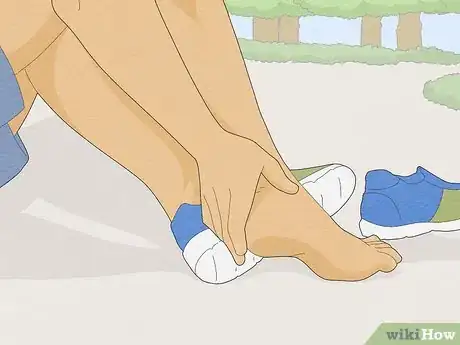
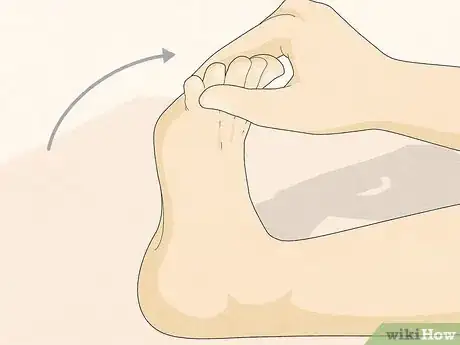
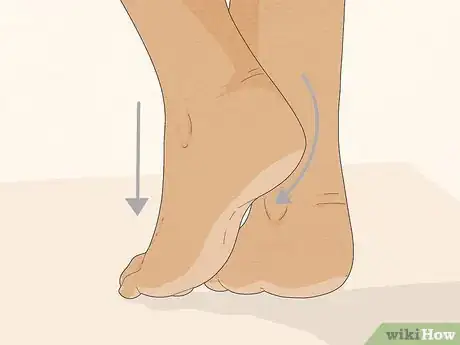
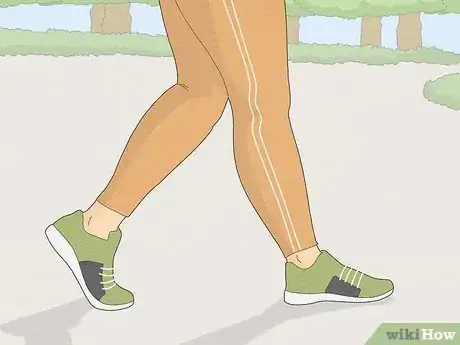
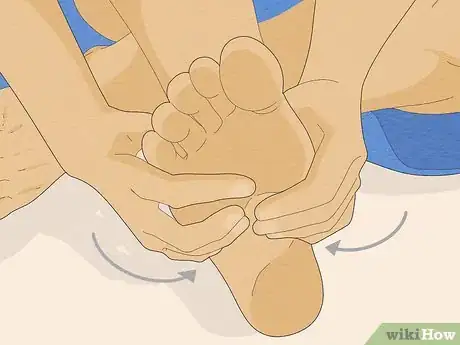

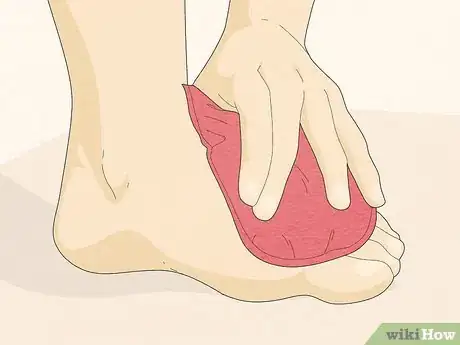
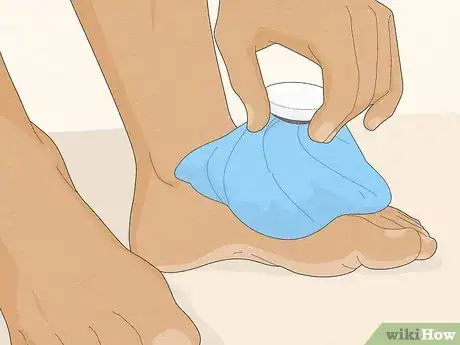
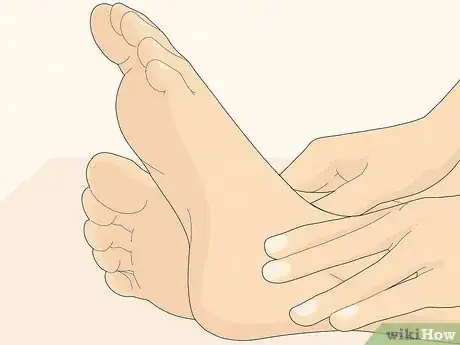
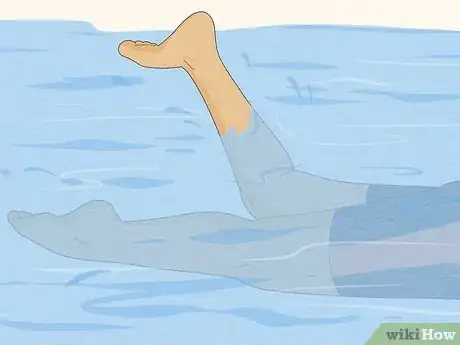
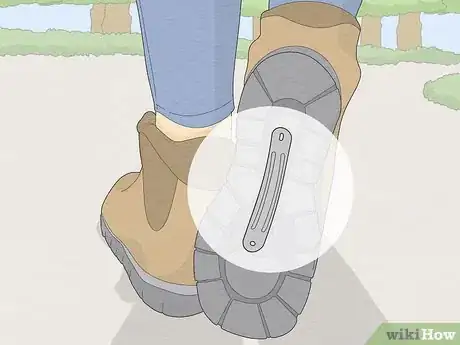
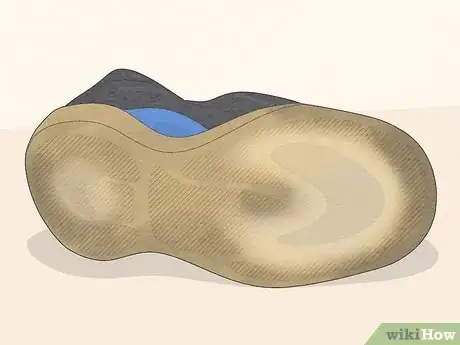
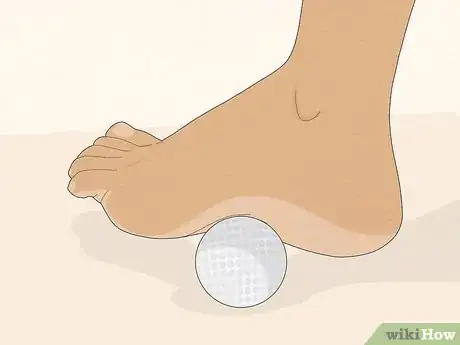
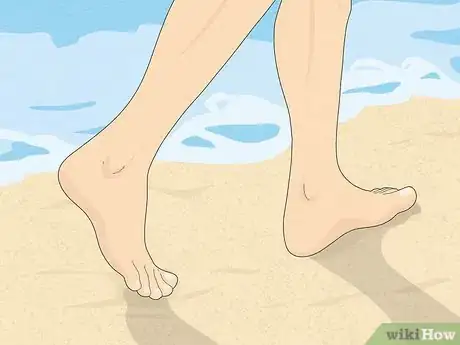
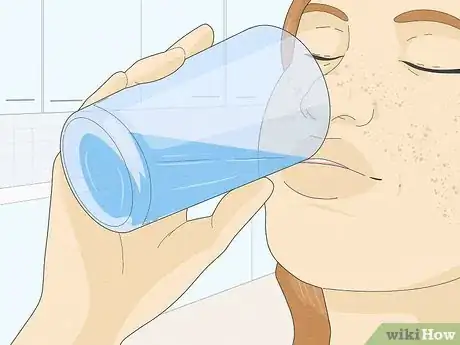
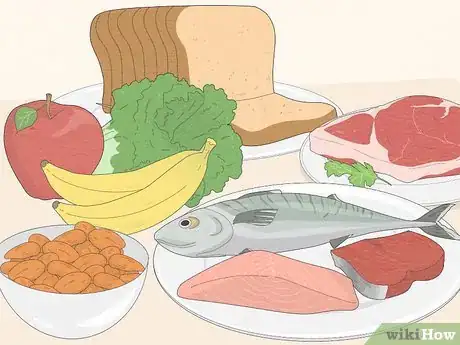
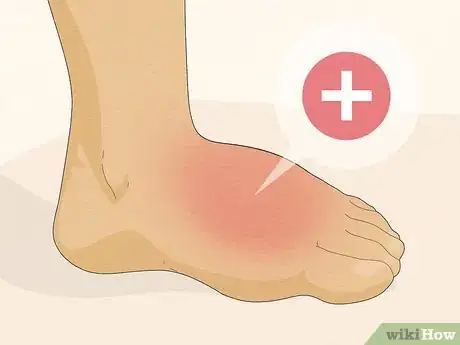
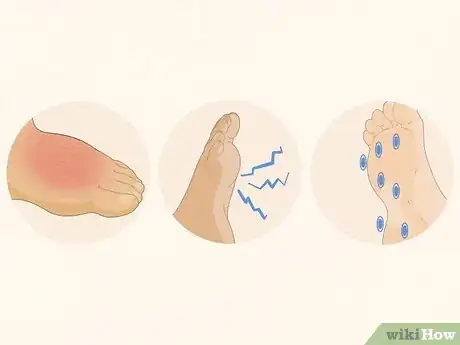
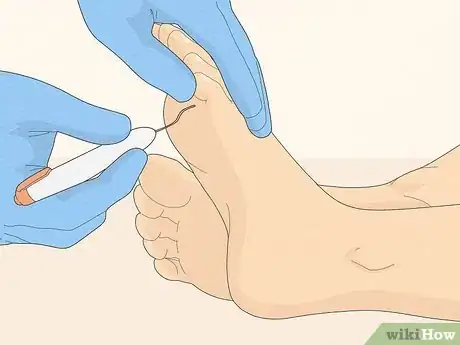
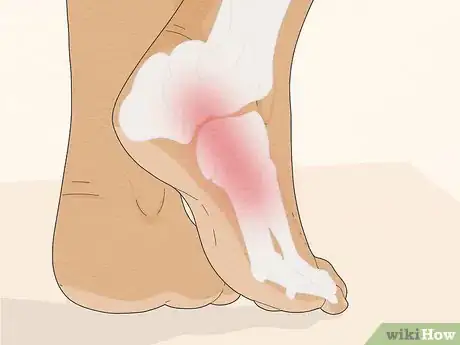
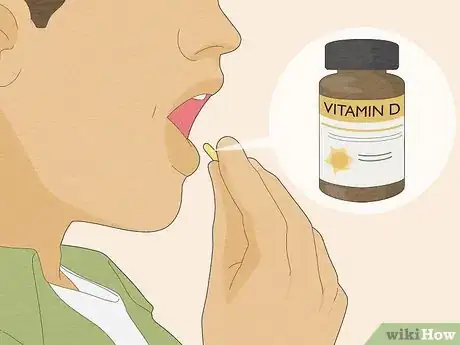
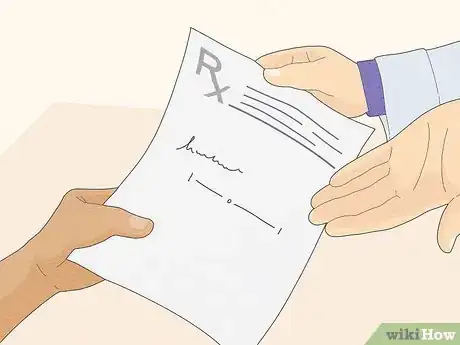
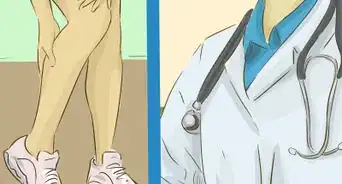
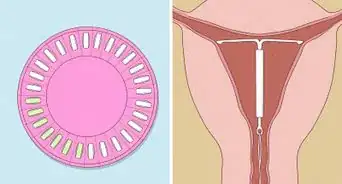
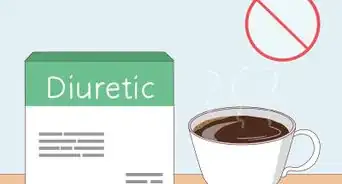
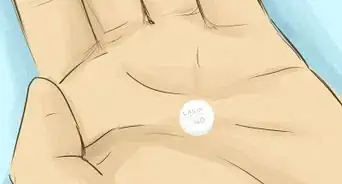
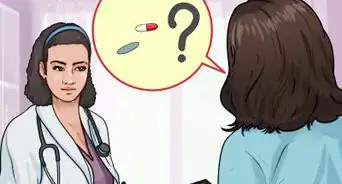
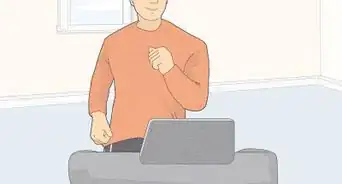
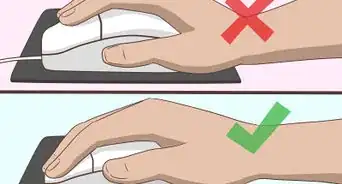
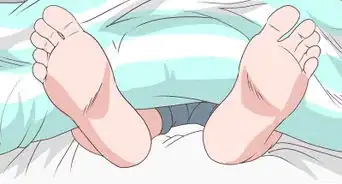
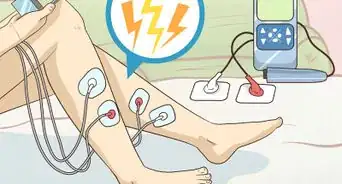

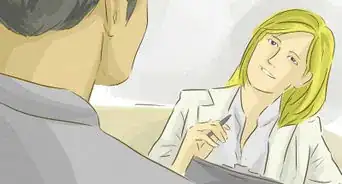











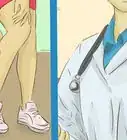
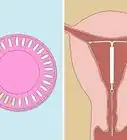
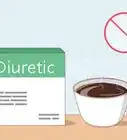
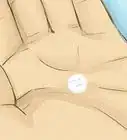



































Medical Disclaimer
The content of this article is not intended to be a substitute for professional medical advice, examination, diagnosis, or treatment. You should always contact your doctor or other qualified healthcare professional before starting, changing, or stopping any kind of health treatment.
Read More...